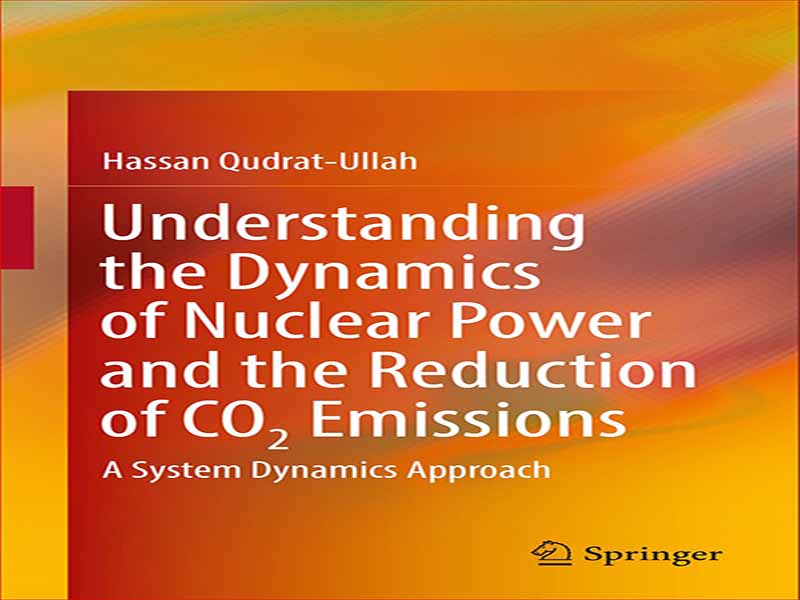- عنوان کتاب: Understanding the Dynamics of Nuclear Power and the Reduction of CO2 Emissions
- نویسنده: Hassan Qudrat-Ullah
- حوزه: اخترفیزیک
- سال انتشار: 2022
- تعداد صفحه: 193
- زبان اصلی: انگلیسی
- نوع فایل: pdf
- حجم فایل: 4.82 مگابایت
انرژی نقش اساسی در رفاه، رفاه و بهبود شرایط زندگی همه ما دارد. مطابق با اهداف توسعه توسعه پایدار سازمان ملل متحد به ویژه شماره 7: “تضمین عرضه مطمئن، مقرون به صرفه و پاک تر انرژی برای همه”، برنامه ریزان سیاست انرژی و تصمیم گیرندگان هر منطقه، ایالت یا کشور آرزوی داشتن یک هدف مشترک – کافی، قابل اعتماد را دارند. تامین انرژی پاک تر و مقرون به صرفه تر. پاکستان، کشوری در حال توسعه با تقاضای فزاینده انرژی، در بخش انرژی خود با چالش ها و فرصت هایی مواجه است. از یک طرف، کشور با مشکلات شدیدی در تامین انرژی مواجه است: (1) کاهش شدید بار و کمکهای مالی در حال تبدیل شدن به یک هنجار در بخش تامین برق، (2) مقرون به صرفه بودن یک مسئله است (به دلیل قیمتهای نسبتاً بالاتر)، و (iii) انتشارات مربوط به الکتریسیته با سرعت هشدار دهنده ای در حال افزایش است. از سوی دیگر، این کشور دارای یک تجربه موفق انرژی هسته ای با فراوانی سوخت انرژی هسته ای بومی و قابلیت تولید سوخت است. پاکستان همچنین موافقتنامه پاریس (PA) را در سال 2016 امضا و تصویب کرده است که مستلزم کاهش انتشار گازهای گلخانه ای از سطح اوج خود تا سال 2030 است. برای دستیابی به کاهش انتشار گازهای گلخانه ای، پاکستان گزارشی را ارائه کرده است، مشارکت ملی تعیین شده پاکستان (Pak- INDC) در سال 2016. Pak-INDC اصول و اقداماتی را ارائه می دهد که برای کاهش انتشار گازهای گلخانه ای در حال انجام است. همچنین اقدامات کاهش و انطباق را که قبلاً در پاکستان اجرا شده است، تشریح می کند. با این حال، با توجه به ماهیت مداوم بحرانهای انرژی در پاکستان و ماهیت غالب تولید برق مبتنی بر فسیل، لازم است اثرات بالقوه زیستمحیطی (مثلاً انتشار CO2) اقدامات و سیاستهای جاری در مورد عرضه انرژی در پاکستان ارزیابی شود. یک تحلیل مبتنی بر مدلسازی، که در آن مفروضات و مکانیسمهای اساسی در Pak-INDC به صراحت در نظر گرفته شدهاند، به ما اجازه میدهد تا نقش مکانیسمها و سیاستهای فعلی را در کاهش انتشار گازهای گلخانهای در چارچوب PA تأیید کنیم. این سوال کلی که تاثیر این برنامه ها در پیگیری کاهش آلاینده های زیست محیطی چه خواهد بود، در این کتاب به طور کامل پرداخته شده است.
Energy plays a fundamental role in the well-being, prosperity, and improved living conditions of all of us. Consistent with the United Nations’ SDGs especially Number 7: “ensuring the reliable, affordable and cleaner supply of energy for all”, energy policy planners and decision makers of any region, state, or country aspire to have a common goal–adequate, reliable, cleaner, and affordable supply of energy. Pakistan, a developing country with increasing energy demand, faces challenges and opportunities in its energy sector. On the one hand, the country is facing severe issues in energy supply: (i) severe load-shedding and bailouts are becoming a norm in the electricity supply sector, (ii) affordability is an issue (due to relatively higher prices), and (iii) electricity-related emissions are increasing at an alarming rate. On the other, the country has a successful nuclear power experience with an abundance of available indigenous nuclear power fuel and fuel-manufacturing capability. Pakistan has also signed and ratified the Paris Agreement (PA) in 2016 which requires a reduction of GHG emissions from their peak level by 2030. To achieve a reduction in GHG emissions, Pakistan has submitted a report, Pakistan’s Intended Nationally Determined Contribution (Pak-INDC) in 2016. The Pak-INDC presents principles and actions that are underway for reducing GHG emissions. It also describes mitigation and adaptation measures already being implemented in Pakistan. However, given the continuing nature of energy crises in Pakistan and the predominant nature of the fossil-based generation of electricity, it is necessary to assess the potential environmental (e.g., CO2 emissions) impact of ongoing initiates and policies regarding energy supply in Pakistan. A modeling-based analysis, where underlying assumptions and mechanisms in the Pak-INDC are explicitly accounted for, allows us to verify the role of current mechanisms and policies in reducing the emissions in the frame of the PA. The general question, what will be the impact of these programs on the pursuit of reducing environmental emissions, is thoroughly addressed in this book.
این کتاب را میتوانید از لینک زیر بصورت رایگان دانلود کنید:
Download: Understanding the Dynamics of Nuclear Power and the Reduction of CO2 Emissions

































نظرات کاربران